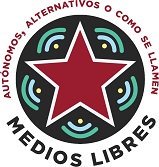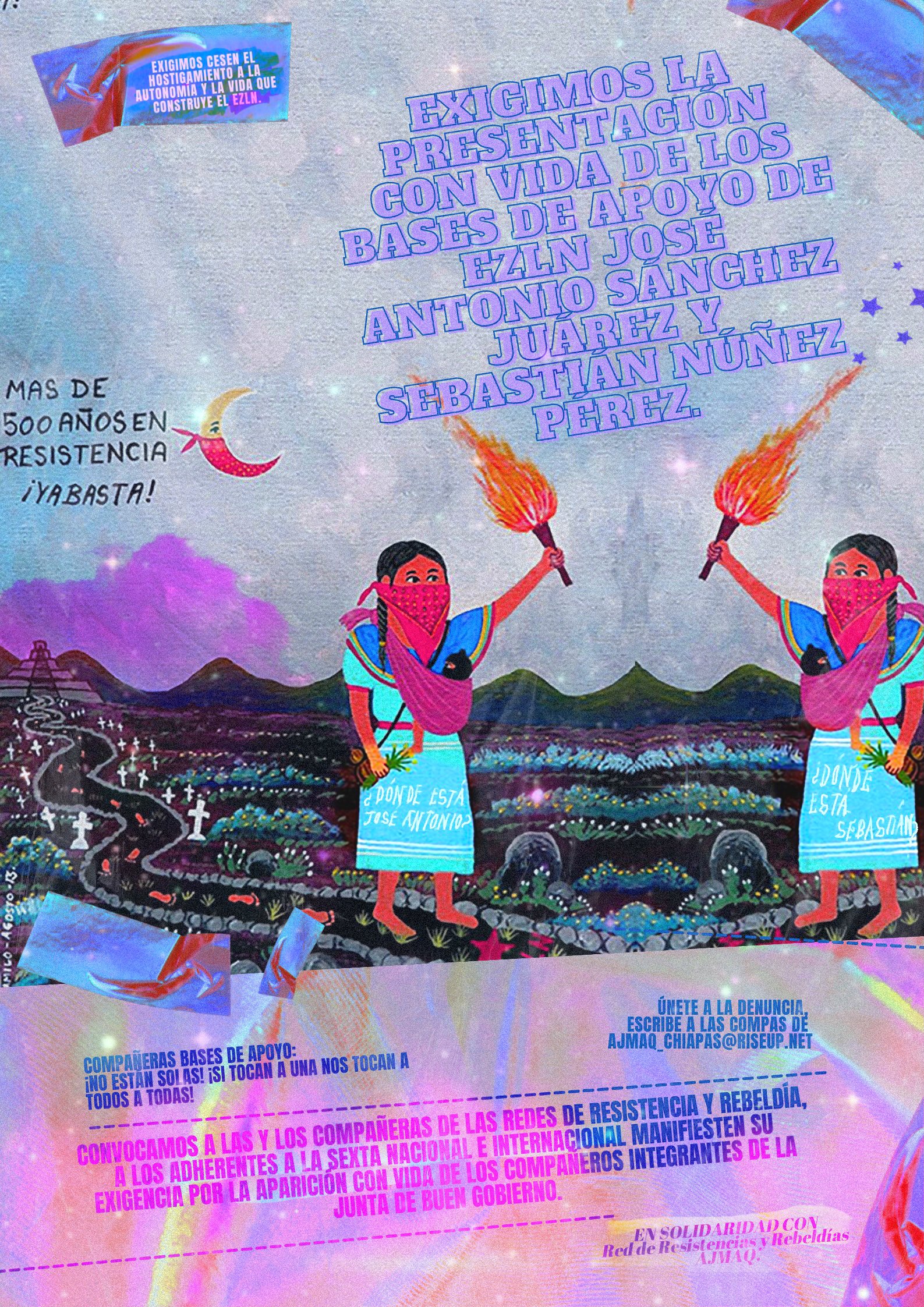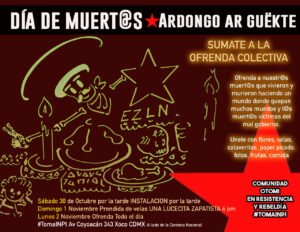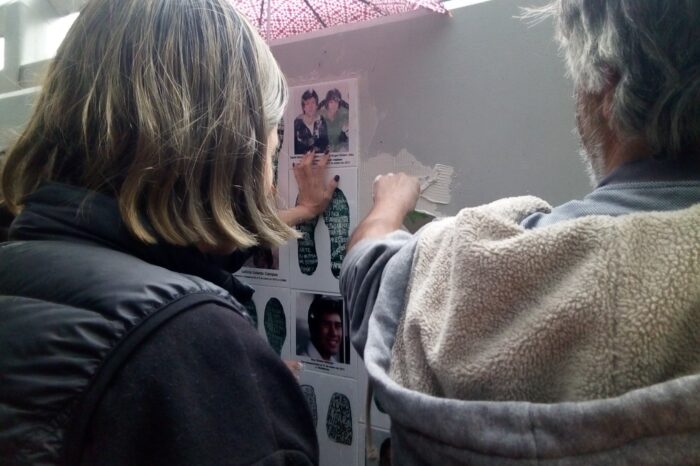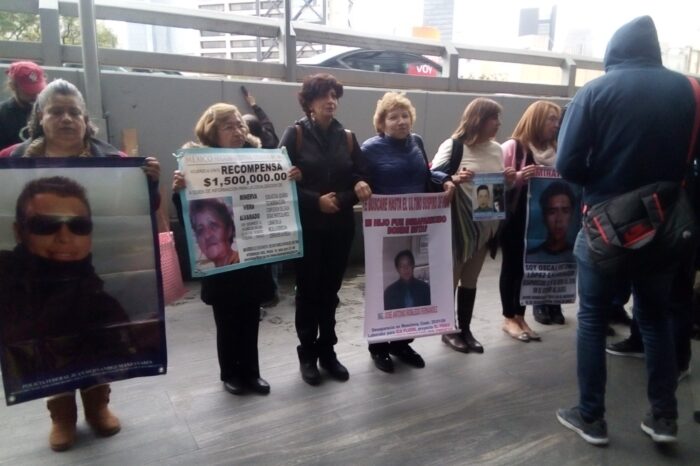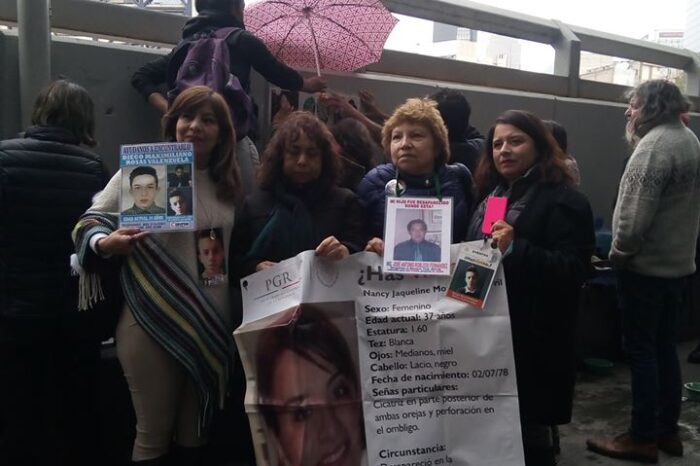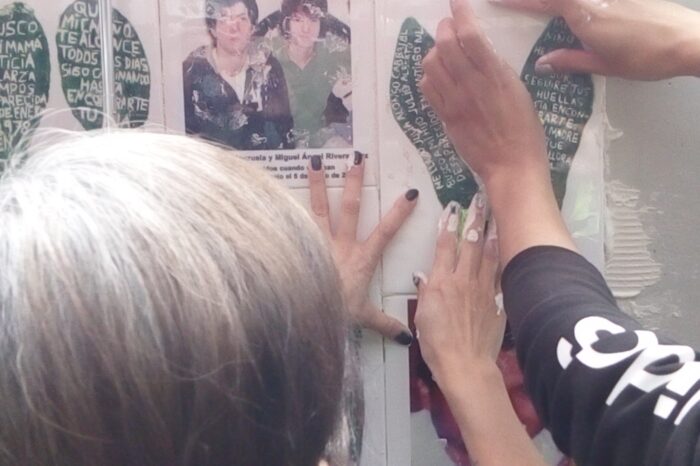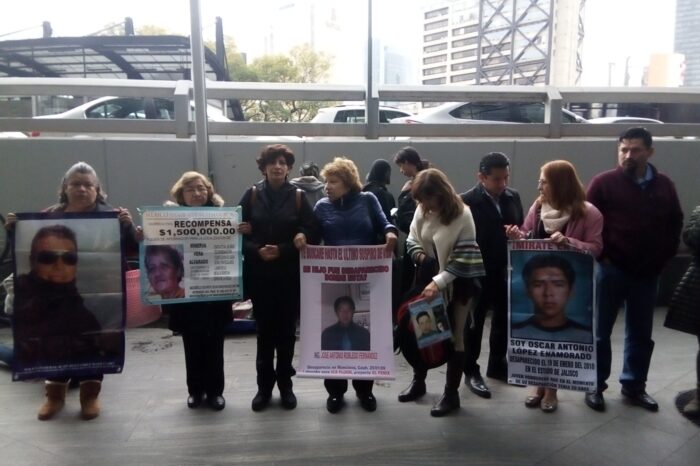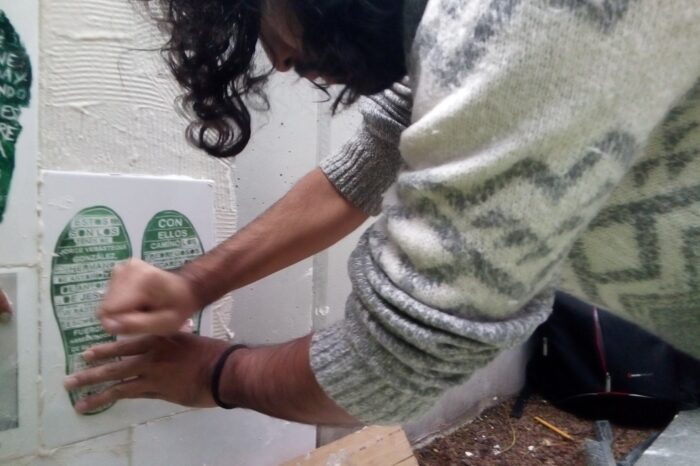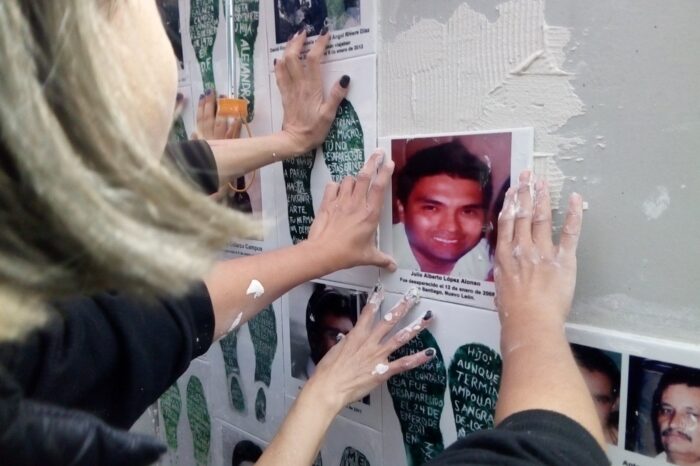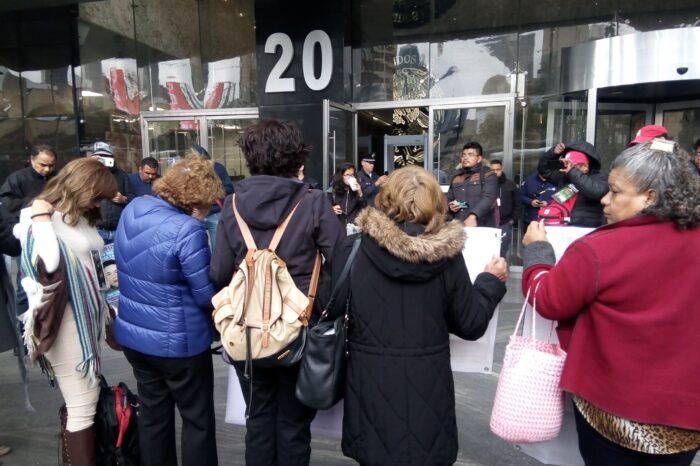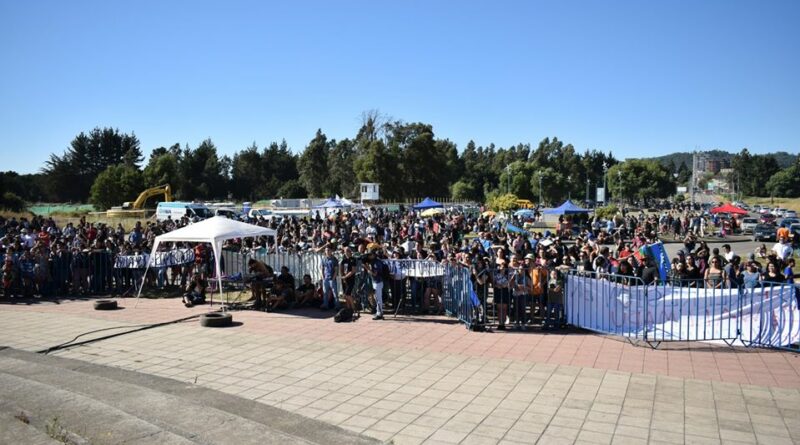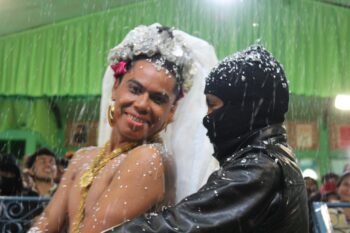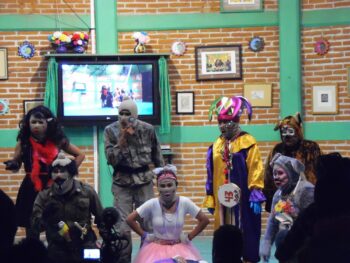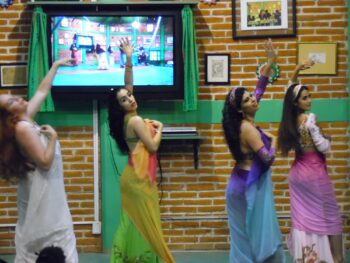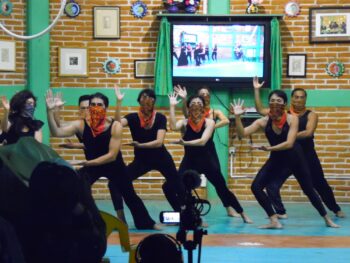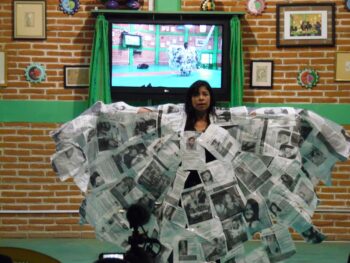Sorry, this entry is only available in Español. For the sake of viewer convenience, the content is shown below in the alternative language. You may click the link to switch the active language.
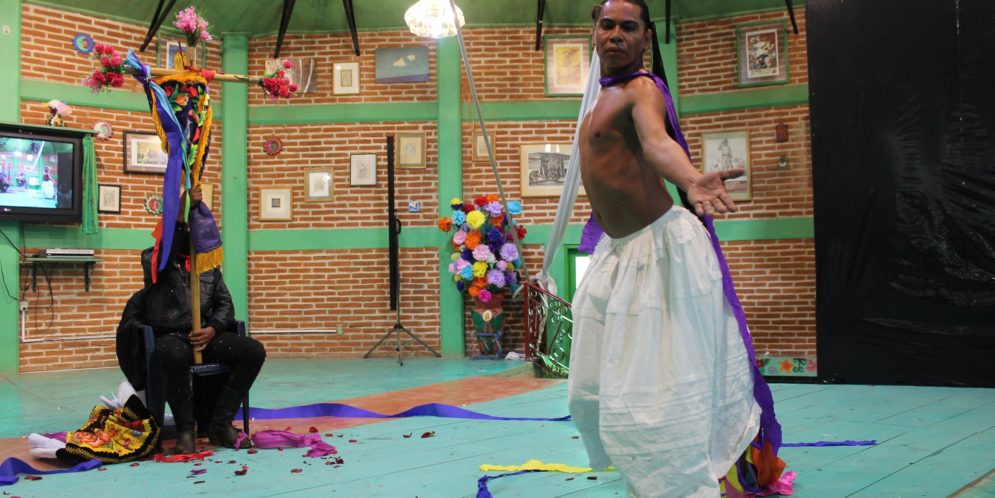
Texto: Radio Pozol | Fotos: Radio Zapatista y Radio Pozol
San Cristóbal de las Casas, Chiapas. 19 de diciembre. El festival de danza convocado por el EZLN “Baílate otro Mundo”, en su cuarto día en el Caracol Zapatista Jacinto Canek, inició con la participación del colectivo Marabunta, con el musical “La noche de los juguetes”, que de manera muy amena reflexiona sobre qué es “Ser humano”, así como de la “Esperanza”, explicaron las y los bailarines, l@s cuales tuvieron a niños y adultos muy divertidos con la diversidad y dinamismo de los personajes en escena.
Posteriormente tocó el turno para el multifacético artista Lukas Avendaño, originario del istmo de Oaxaca, el cual con música, baile, diversos vestuarios, escenografía y textos espontáneos alusivos a la lucha social, derechos humanos, equidad de género, zapatismo, diversidad, entre otros, creó una atmósfera de fiesta y reflexión, que mantuvieron expectante en todo momento a los asistentes. Avendaño también interactuó por todo el auditorio del CompArte con las Bases de Apoyo Zapatistas, mediante el baile y la recreación de las festividades oaxaqueñas.
Este día también se presentaron danzas como la del “Venado”, basada en el tradicional baile del estado de Sonora, la cual fue interpretada por Hugo Molina. Isaura, danza contemporánea. Sin nombre, danza en resistencia. Por su parte Angélica Maia Dark, quien cuenta con más de 15 años de formación profesional y es egresada de la Escuela nacional de Danza contemporánea, y “procura ampliar su formación creando un estilo propio, en ámbitos independientes”, en esta ocasión presentó la coreografía “crónicas de una mente explotada”.
De igual forma se presentaron en el auditorio del Caracol Zapatista Jacinto Canek, bailes con temas como la migración, el feminicidio, y de diferentes problemáticas sociales, así como de otros países a cargo de Liten, compañía M de Mar; Páramos del Colectivo sociodanza del FARO; Ofeece Ub danza moderna; Gisela Vuela, con Intervención de danzas con mapeo.
Representando danzas de origen árabe se presentaron Fernanda Rueda, María Eugenia Cancino, María Paz Richard, Natalia García, Paulina Núñez y Verónica López, de la escuela “Zarah Danza Oriental”; la cual comparte desde 2008 el arte de la danza oriental así como la creación de un espacio de respeto y libertad, donde las alumnas puedan desarrollar su danza como complemento de su vida, describen las bailarinas.
“Hace más de dos años, en estas montañas del sureste mexicano, en ocasión de las reuniones preparatorias de lo que después se llamaría “La Otra Campaña”, una mujer joven dijo, palabras más, palabras menos, “si tu revolución no sabe bailar, no me invites a tu revolución”. Tiempo después, pero entonces en las montañas del noroeste de México, volví a escuchar esas mismas palabras de la boca de un jefe indígena que se esfuerza por mantener vivos los bailes y la cultura toda de nuestros ancestros. Al escuchar a la una y al otro, en tiempos distintos, yo volteé a mirar a una de las comandantas y le dije: “Ahí le hablan jovena”. La Comandanta no dejó de mirar hacia la concurrencia, pero en voz baja dijo: “Urrr Sup… Uta magre, viera que me dan pista y hasta les dejo planito el suelo”, compartió el entonces Subcomandante Marcos, en diciembre de 2007, en el Coloquio Aubry. Parte I. Pensar el Blanco.
FOTOS: Colectivo Radio Zapatista y Pozol
INFORMACIÓN RELACIONADA: Cotric





